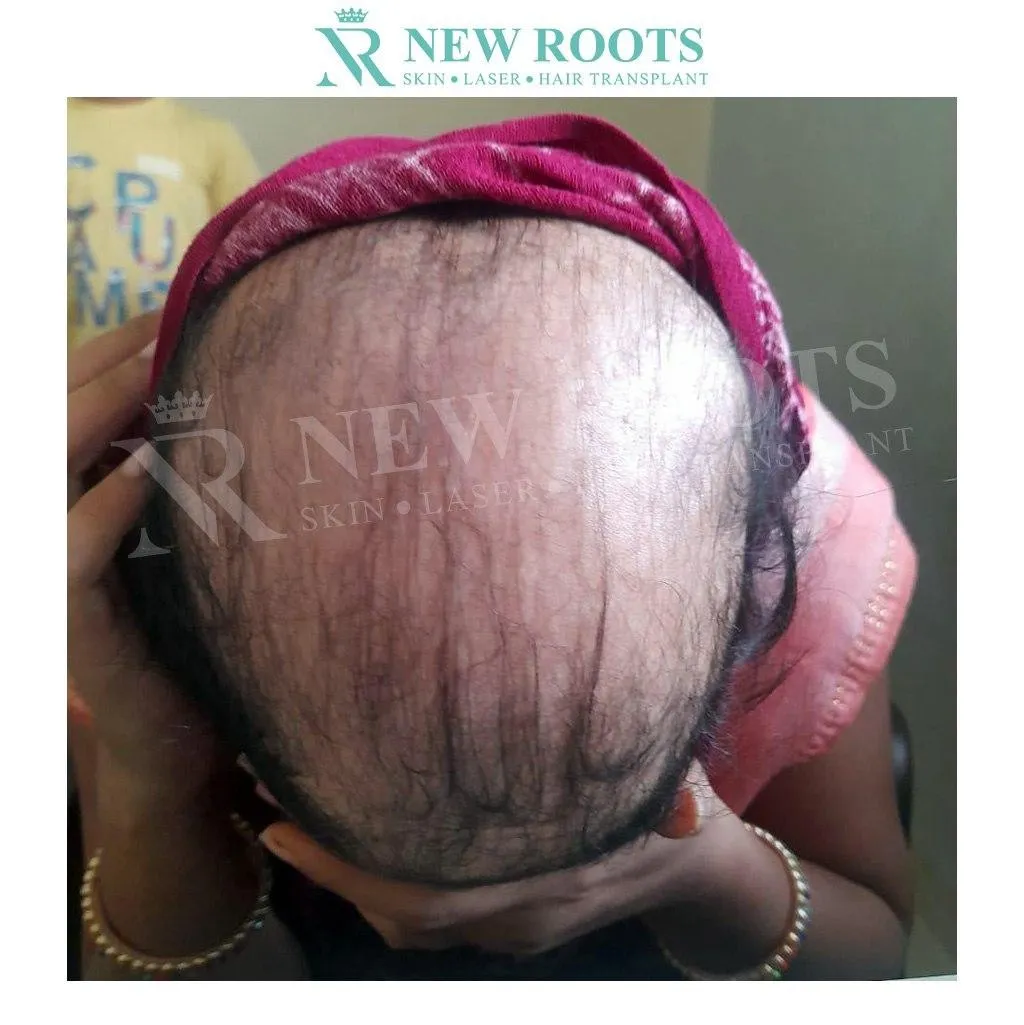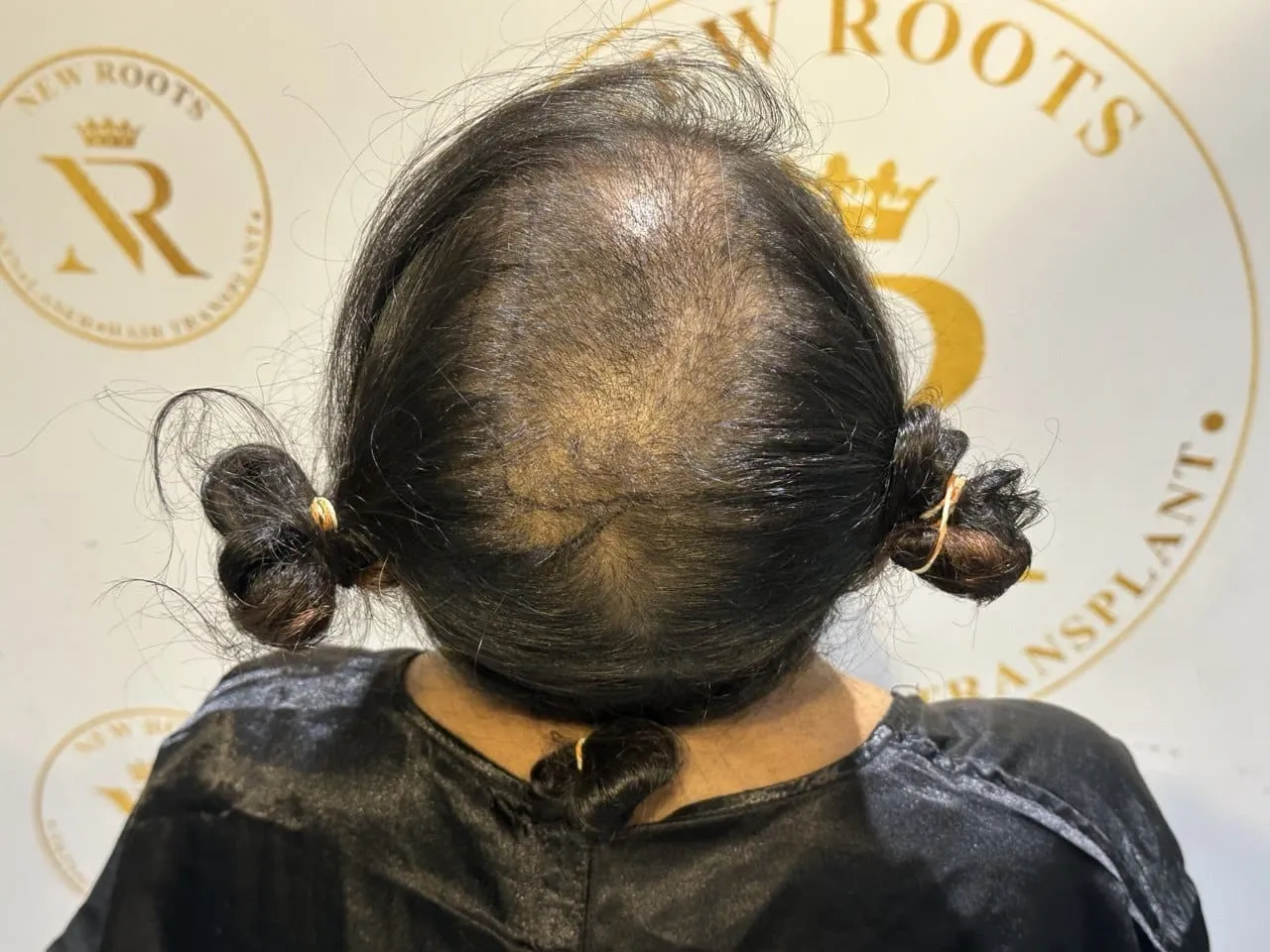Hormonal alopecia affects people’s lives greatly as it causes them emotional issues in addition to physical ones.
That is why it is crucial to learn the differences, for instance, between alopecia areata, alopecia totalis, and alopecia universalis, to find the correct solutions.
Specific hair restoration plans, together with such sophisticated methods as PRP, Laser therapy, steroid treatment, and others, can help.
Furthermore, those clients who want to receive services at clinics, such as New Roots, may be provided with individual consultations on various issues, if necessary.
Thus, examining these treatment options, people with alopecia troubles regain their confidence, get an improved look, and improve their quality of life.
Introduction to Alopecia Troubles
Alopecia issues cover all varieties of baldness, and the conditions are as devastating to the outside human look as to the internal persona.
Alopecia areata is one of the most common forms of alopecia; it’s characterized by random hair loss, which leads to slow hair thinning and balding.
This autoimmune disorder occurs when the body’s immune system targets hair-producing hair follicles as foreign bodies.
Table of Contents
Types of Alopecia

Alopecia Areata
Alopecia areata is characterized simply by well-defined rounds of hair loss, the hair surface is smooth, and may advance to more extensive forms like alopecia totalis, affecting all scalp hair.

Alopecia Totalis
Alopecia totalis may be defined as a condition where all the hair on the head is affected; this condition is often hereditary and can be related to immunological responses affecting hair growth areas.

Alopecia Universalis
AU results in hair loss throughout the body and causes most of the patients to develop low self-esteem and lose confidence.

Diffuse Alopecia Areata
Sizing alopecia areata syndromes characterization of a rozsée loss of hair means that diagnosis and posterior treatment are more demanding.

Ophiasis Alopecia Areata
A specific pattern is ophiasis alopecia areata, in which hair loss affects only the temporal and occipital region, giving it the appearance of a loose ring.
Symptoms and Diagnosis of Alopecia
Common Symptoms
Alopecia symptoms can present in many forms, and this is something that must be diagnosed early before beginning a treatment process. Common symptoms associated with alopecia include:
- Nail Pitting: This condition involves minute concavities or waves on the nails and is associated with such diseases as alopecia. In some cases, it may be an early sign of hair loss problems.
- Hair Thinning: Alopecia is best characterized by a steady pattern of hairline recession and thinning of hair. This can develop over any part of the scalp and may sometimes be inconspicuous.
- Spotting: People develop bald patches; these may begin as small circular regions and progress and get bigger. These patches can be completely void of any hair and also include perfectly flat areas.
Change in Hair Texture: People may have the feeling that they are losing hair if they find their hair’s texture has changed and is less thick or if it easily breaks.
Inflammation or Itching: There are scalp reactions that include itchiness or inflammation in the areas that are involved in hair loss due to an immune reaction.
Out of the symptoms listed above, it is advisable to seek professional assessment once you identify some or all of these signs, since early diagnosis forms an effective way through which a lot of alopecia-related troubles can be treated, hence the need to embrace treatment as soon as one recognizes them.
Diagnostic Techniques
| Technique | Description |
| Physical Exam | Visual assessment of hair loss patterns and scalp condition. |
| Dermatoscopy | Utilizes a dermatoscope to magnify and assess the scalp and hair follicles. |
| Biopsy | Taking a small skin sample for laboratory analysis to determine the cause of hair loss. |
The Position Of The Immune Machine In Alopecia
The immune system forms a great determining factor of alopecia, mainly the alopecia areata subtype, which sees the immune system attacking hair follicles. These autoimmune effects cause hair loss among other symptoms.
Key Points
- Immune Privilege: Hair follicles have immune privilege, so they can avoid T cell attack only if a breakdown of this response occurs.
- Inflammation: Extensive infiltration of immune cells into the periphery of hair follicles leads to inflammation and perturbation of the hair growth cycle, mainly during anagen.
- Genetic Factors: First-degree relatives and certain genes are also associated with predisposition to alopecia areata.
- Environmental Triggers: Stress and trespasses of viruses prompt the autoimmune response.
Tailored Hair Transplant Solutions
Techniques Associated With Hair Follicle Transplants
At the New Roots Clinic, patients receive key individual hair restoration solutions, as this clinic offers treatments that are useful when treating different types of alopecia. Two forms of grafts are used: laser technology and conventional methods to transplant healthy follicles onto balding sections.
Platelet-rich plasma and its utility PRP are being used in hair restoration procedures have gained popularity recently.
At the New Roots – Skin, Laser & Hair Transplant Clinic, the focus is on personalized hair restoration solutions that are effective in treating various types of alopecia. Laser techniques and traditional methods are utilized to transfer healthy hair follicles into thinning areas.
PRP and Its Efficacy
PRP is gaining traction in hair restoration. It entails the taking of the patient’s blood, filtering it in a process of affording it a richer concentration of platelets, then implanting this plasma in the scalp to promote the growth of hair.
Laser therapy
Laser treatments are also important in phototherapy for hair regrowth. Research proves that skin health and hair density are benefited to a certain extent by light of specific wavelengths.
Understanding Various Stages of Alopecia Troubles
Corticosteroids and Topical Immunotherapy
Topical and injected corticosteroids are used to lower infection and are determined to be very effective. Also, some of the remedies for topical immunotherapy are effective because they assist in changing the immune response to provoke the regrowth of hair.
Minoxidil: Application and Results
Minoxidil is used topically on the head each day as an agent of stimulation of regrowth. It is therefore crucial that the approach is continued in the long run to ensure the results are persistent.
Precise Stylings And Cosmetology Methods
Anyone facing alopecia issues can still style their hair properly to camouflage the balding areas to build confidence while waiting for treatment.
Prevention of Alopecia Troubles
Dietary Implications, including Vitamin D Tablets
Essential nutrients that are needed to boost the functionality of hair follicles can be obtained from products rich in adequate vitamin D supplements. Abundant protein and iron are also essential for hair care, and a balanced diet is very important as well.
Managing Flare-Ups
The best ways to prevent flare-ups in alopecia include managing stress. One can use different practices, such as practicing yoga or meditation, or simply exercising daily, to overcome stress.
Conclusion
Living with alopecia can be tough, but treatment must be sought with certain measures for the condition.
At New Roots – Skin, Laser & Hair Transplant Clinic, hair transplantation services help clients get optimum solutions, as, according to their needs, we provide them a new chance to feel fresh and confident about their looks.
Getting a referral from a general physician to an experienced dermatologist for alopecia troubles allows one the best chance to start healing.
Q&A ASK:
IA troubles include the following: alopecia areata, alopecia totalis, and alopecia universalis. They cause hair loss of different severities because the excess activity of the immune system affects hair follicles, suggesting bald areas or a complete absence of hair.
Most alopecia issues originating from pathogenic factors are immune responses, in which the hair roots are attacked by the immune system. This condition may also develop due to genetic predisposition and some trigger factors, which can include environmental factors and immense stress to the patient.
Some early alarms of alopecia troubles are the appearance of bald patches, hair loss that occurs in clumps, and nails that are pitted. If you observe such changes, you should use the internet to search for a dermatologist for a proper diagnosis.
Indeed, alopecia does disrupt, and it can be a hereditary illness. The history of this condition is hereditary, as the probabilities of an individual being affected by this disease depend on the genetic factors. People with family members affected by alopecia may be at a greater risk than others.
Galderma flap treatments for alopecia troubles are corticosteroids, minoxidil, and immunotherapy. These treatments are geared at alleviating symptoms through the promotion of hair growth or messing with the immune system as an attempt to treat alopecia based on its type and likely condition.
Yes, indeed, it is possible to use lifestyle changes to embrace different troubles, that is, with alopecia. Some remedial measures related to diet and stress, besides refraining from treatments that may aggravate the condition, may help prevent frequent attacks and improve hair health.
Skin and hair-related discomforts posed by alopecia cutis can greatly affect mental well-being, particularly causing anxiety, depression, and low self-esteem.





